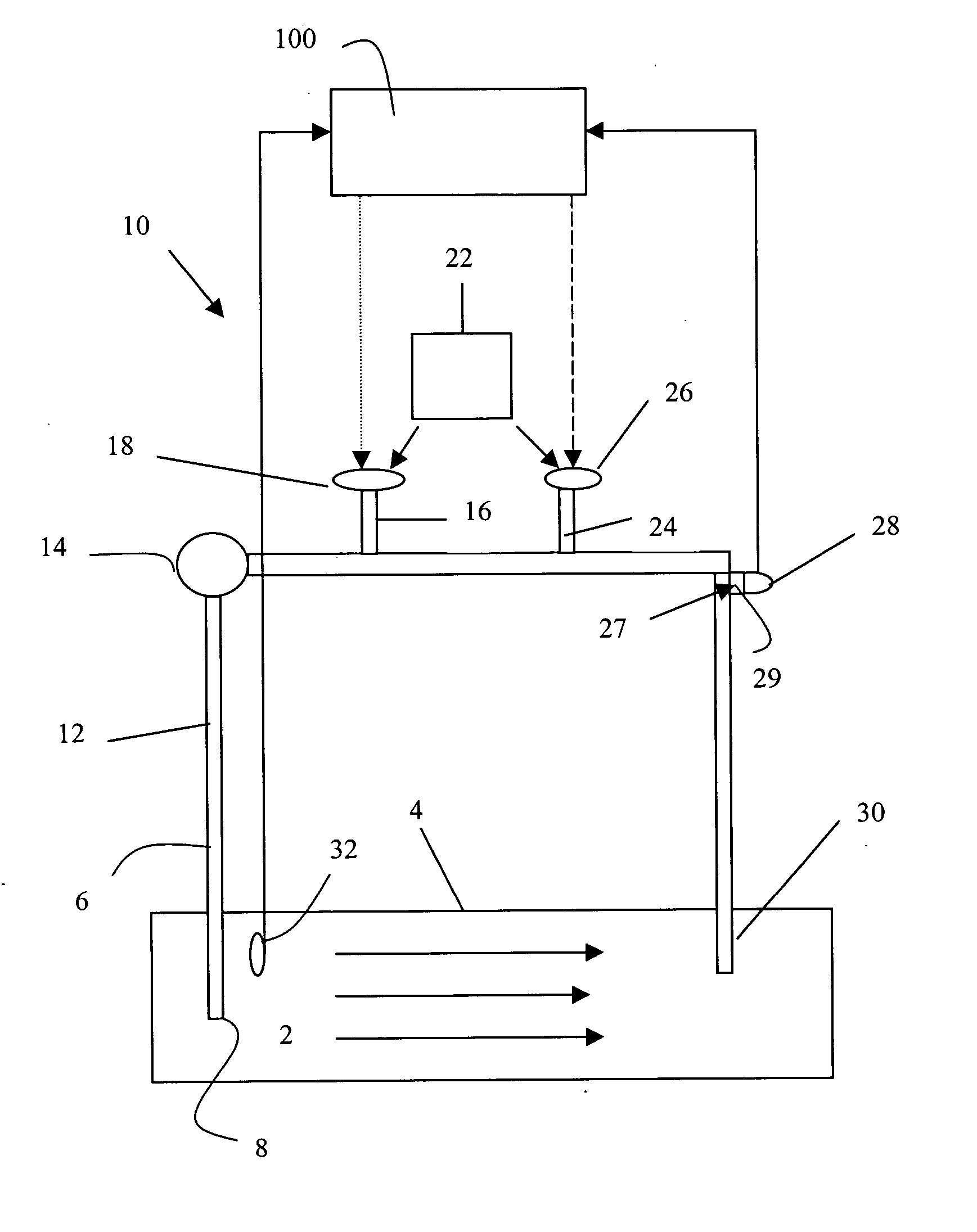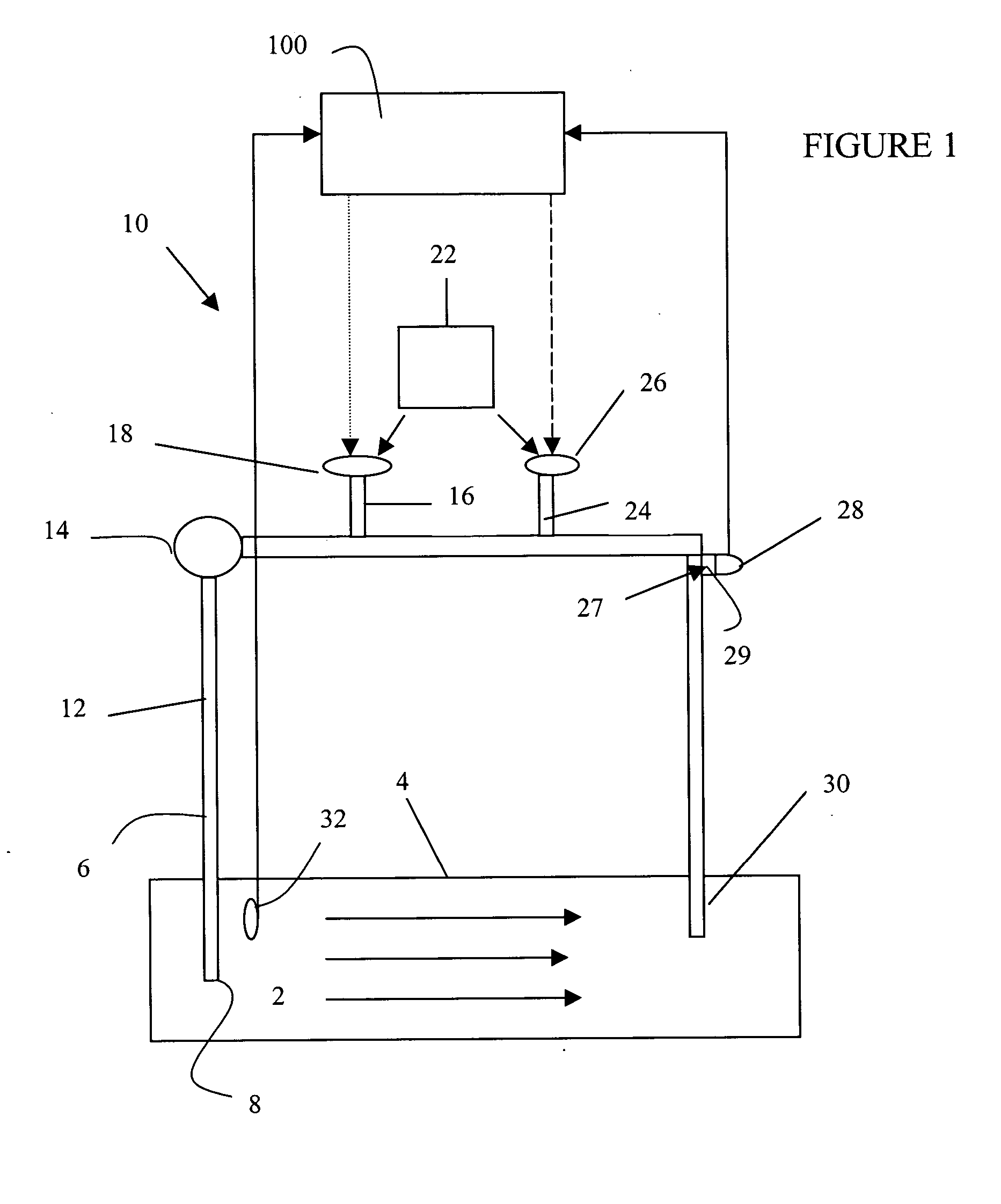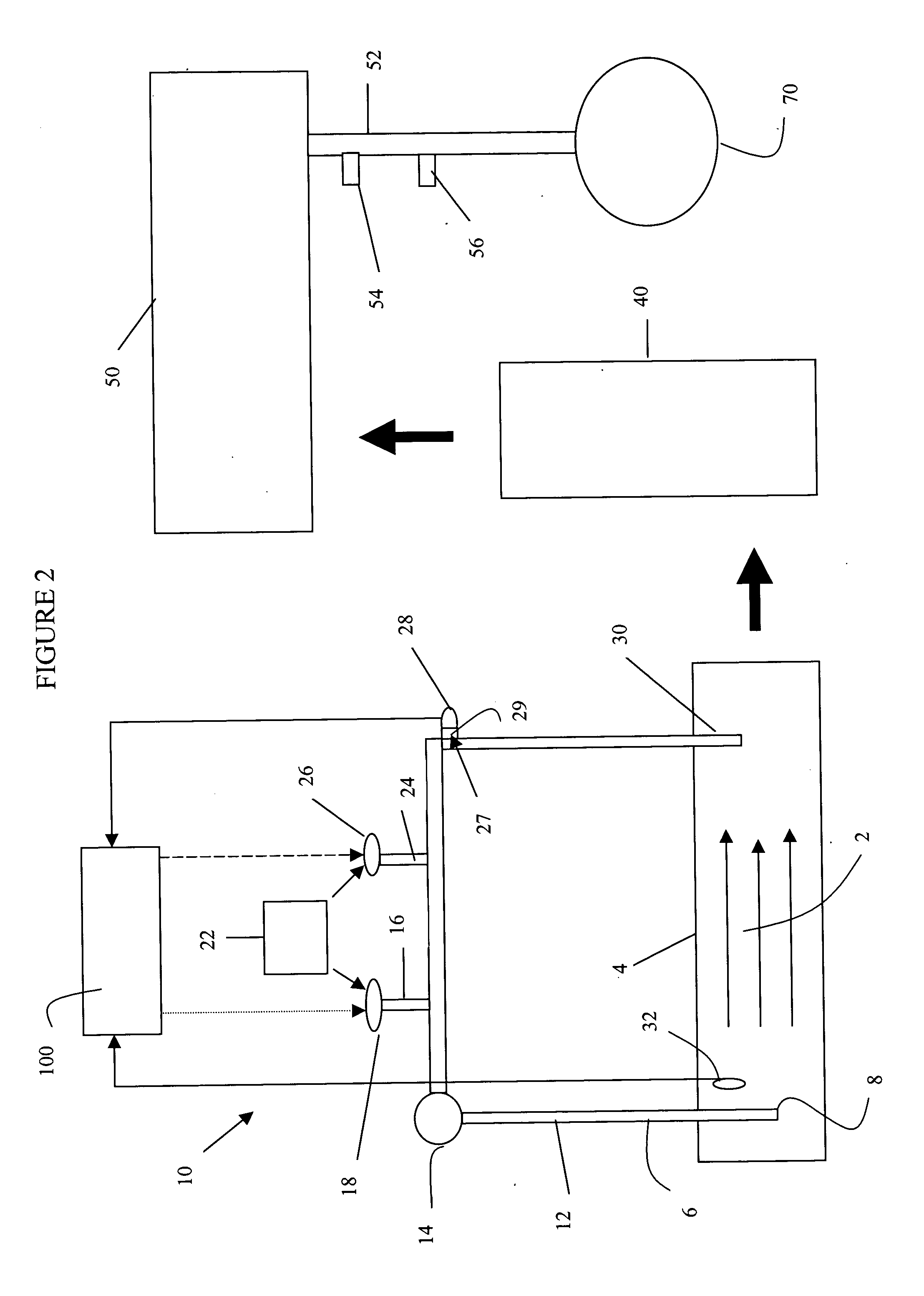Methods and systems for improved dosing of a chemical treatment, such as chlorine dioxide, into a fluid stream, such as a wastewater stream
a technology of chlorine dioxide and liquid purification, which is applied in the direction of filtration separation, other chemical processes, separation processes, etc., can solve the problems of harming the natural flora and fauna, unfavorable to under and undesirable to over-treat the wastewater stream with chlorine, so as to reduce or eliminate the need
- Summary
- Abstract
- Description
- Claims
- Application Information
AI Technical Summary
Benefits of technology
Problems solved by technology
Method used
Image
Examples
example 1
[0118] the following table of data exemplifies how the present invention, using the algorithms described above, operates to refine chlorine dioxide dosing in a wastewater treatment plant. The side stream flow is one percent of the main stream, and the ODR has been determined to be 1.4 ppm in the main stream (i.e., 140 ppm in side stream) The split between the first (flow-proportional) and second (variable) dosage points is 0.75 and 0.25. The F factor is set to 1.35.
MAINSTREAM1y MSGFLOW1ST2NDPOINTRATEDOSAGEDOSAGEREADINGTIMESTATUS(MGD)P1DRP2DR“X”Comments / Actions:1200Normal201053598Add 9.45 ppm to P2DR base.1201Normal2010544.45104Add 1.35 ppm to P2DR base.1202Normal2010536.35102Add 4.05 ppm to P2DR base.1210Normal2010539.05106Do not adjust base rate P2DR.1211Normal2010535.00102Add 4.05 ppm to P2DR base.1212Normal2010539.05104Add 1.35 ppm to P2DR base.1213Normal2010536.35103Add 2.70 ppm to P2DR base.1400Stormwater2110537.70100Add 6.75 ppm to P2DR base.starts1401Stormwater10541.75103Ad...
PUM
| Property | Measurement | Unit |
|---|---|---|
| distance | aaaaa | aaaaa |
| flow rate | aaaaa | aaaaa |
| flow flow rate | aaaaa | aaaaa |
Abstract
Description
Claims
Application Information
 Login to View More
Login to View More - R&D
- Intellectual Property
- Life Sciences
- Materials
- Tech Scout
- Unparalleled Data Quality
- Higher Quality Content
- 60% Fewer Hallucinations
Browse by: Latest US Patents, China's latest patents, Technical Efficacy Thesaurus, Application Domain, Technology Topic, Popular Technical Reports.
© 2025 PatSnap. All rights reserved.Legal|Privacy policy|Modern Slavery Act Transparency Statement|Sitemap|About US| Contact US: help@patsnap.com



